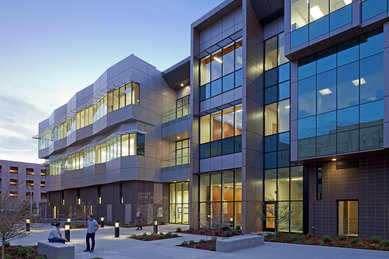Forensic Science Facilities
Forensic science facilities have experienced an influx of operational and design changes due to advancements in technology, new DNA procedures and instrumentation, and increased public interest through the media-programs such as CSI: Miami and highly publicized crime cases. These facilities are vital to court cases as they conduct scientific investigations on items from crime scenes and process a myriad of other evidence.
The success of a new or renovated forensic laboratory building depends highly on a design team that has a thorough understanding of its unique characteristics, including the five-labs-in-one concept. Forensic science buildings often support a variety of laboratory spaces for biology, chemistry, microscopy, instrumentation and physical sciences. These labs are made up of independent sections that investigate different areas including: biology/DNA, drug analysis, firearms, latent fingerprints, trace evidence, questioned documents, and digital media. Project teams must weave together these investigative elements with detailed chain-of-custody and accreditation requirements that further challenge facility planning and design.
In this time of increasing forensic laboratory challenges, as well as aging and overcrowded conditions, the need for successful and timely assessment of operations and facility planning is more critical than ever. To achieve success it is important that decision makers are informed of the complexities and challenges that characterize the development process. An initial and comprehensive study to establish facility needs should be prepared by professionals with experience in forensic laboratory planning and design.
